Abstract
Studies on the circadian rhythm of conidiation in the bd strain of Neurospora crassa Shear and Dodge have shown that temperature step-up and step-down perturbations produce phase advances and delays, respectively. Pulse-up and pulse-down treatments lead to both phase advances and delays. The resulting phase shifts can be very large, and few to no transients are observed.
Small amplitude temperature cycles are capable of entraining the circadian rhythm, and holding bd at low temperatures appears to stop the circadian oscillator late in the subjective night (circadian time 2200). Aspects of the temperature responses that are somewhat unusual include the high sensivity, the lack of transients, and the phase at which the oscillator stops under low temperatures.
Full text
PDF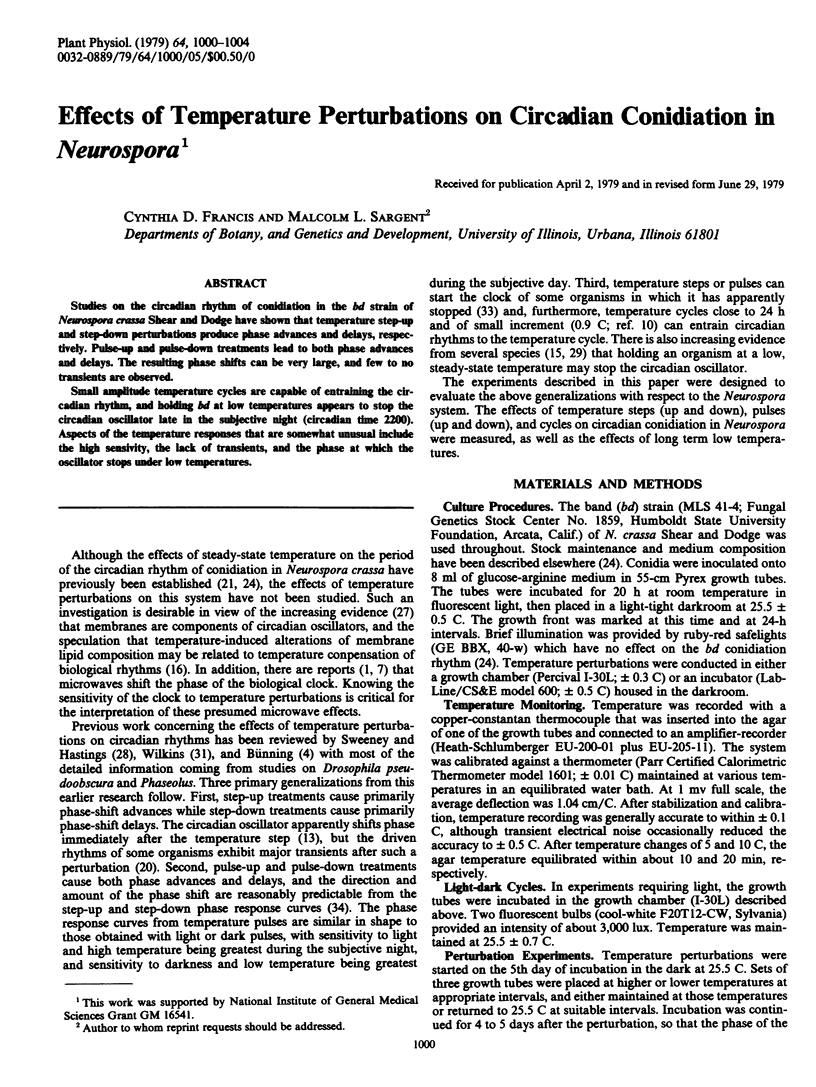
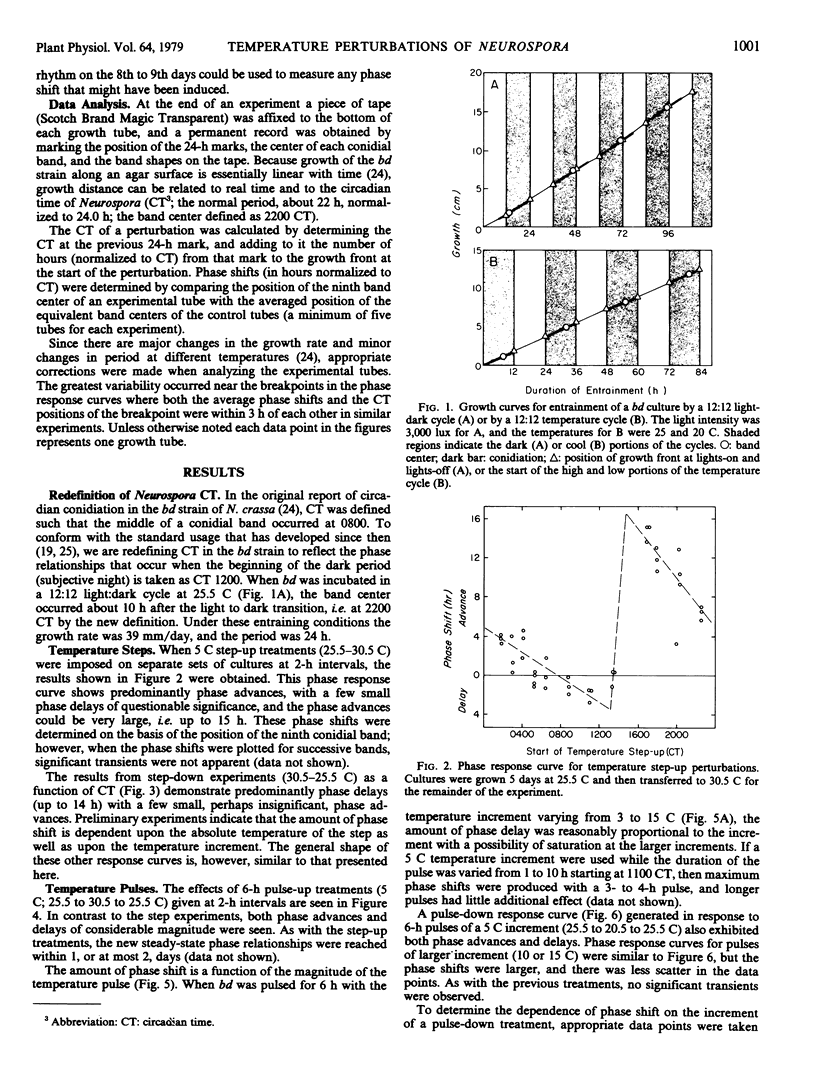
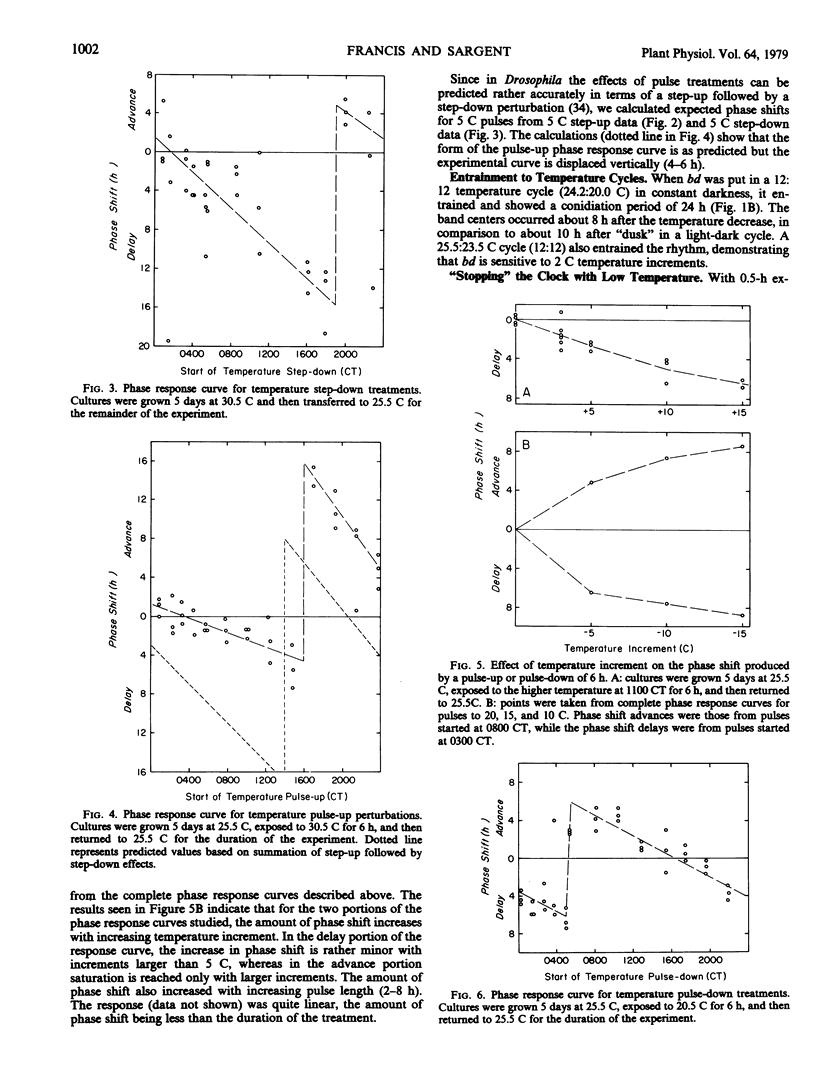
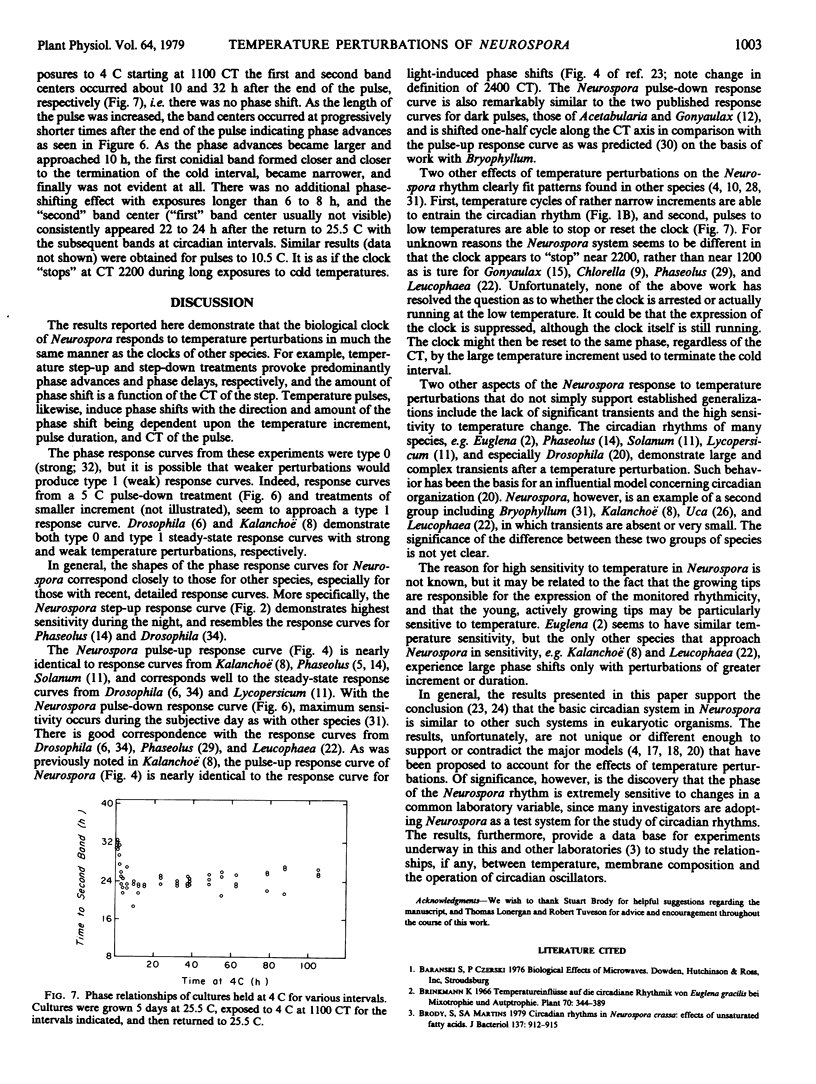
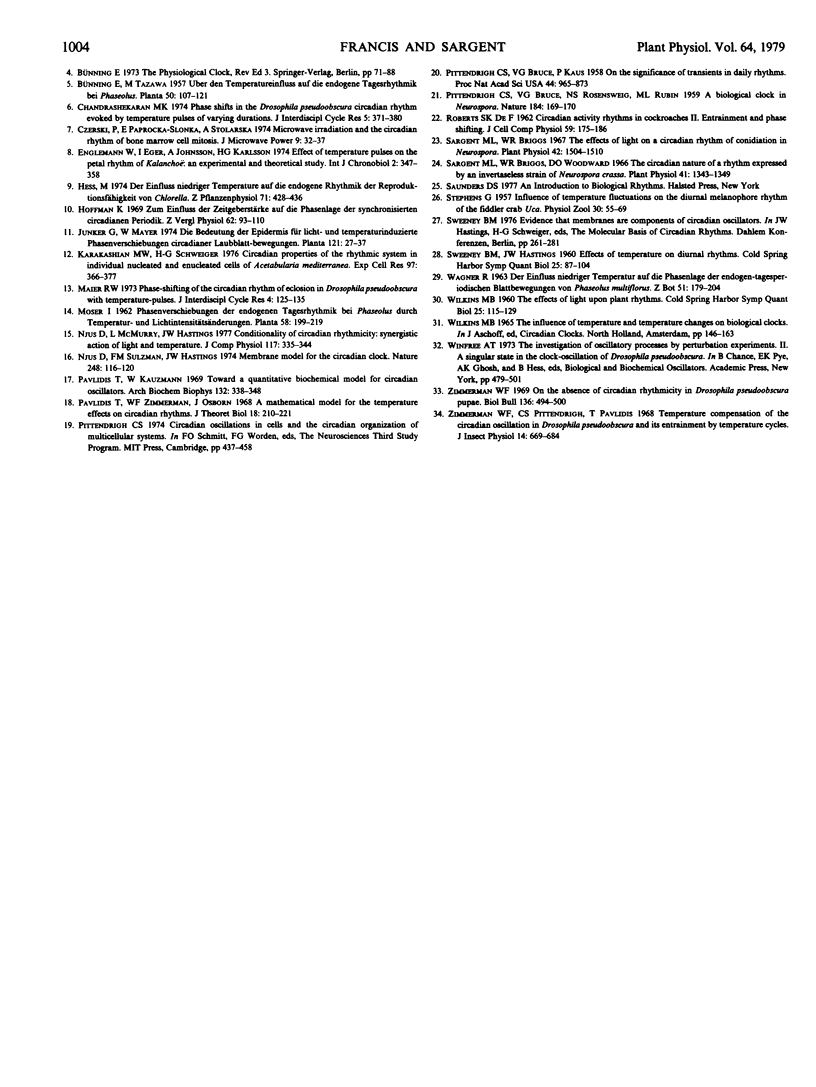
Selected References
These references are in PubMed. This may not be the complete list of references from this article.
- Brody S., Martins S. A. Circadian rhythms in Neurospora crassa: effects of unsaturated fatty acids. J Bacteriol. 1979 Feb;137(2):912–915. doi: 10.1128/jb.137.2.912-915.1979. [DOI] [PMC free article] [PubMed] [Google Scholar]
- Karakashian M. W., Schweiger H. G. Circadian properties of the rhythmic system in individual nucleated and enucleated cells of Acetabularia mediterranea. Exp Cell Res. 1976 Feb;97(2):366–377. doi: 10.1016/0014-4827(76)90628-5. [DOI] [PubMed] [Google Scholar]
- Mager W. H., Hoving R., Planta R. J. In vitro synthesis of yeast ribosomal proteins. FEBS Lett. 1975 Oct 15;58(1):219–221. doi: 10.1016/0014-5793(75)80263-8. [DOI] [PubMed] [Google Scholar]
- Njus D., Sulzman F. M., Hastings J. W. Membrane model for the circadian clock. Nature. 1974 Mar 8;248(5444):116–120. doi: 10.1038/248116a0. [DOI] [PubMed] [Google Scholar]
- Pavlidis T., Kauzmann W. Toward a quantitative biochemical model for circadian oscillators. Arch Biochem Biophys. 1969 Jun;132(1):338–348. doi: 10.1016/0003-9861(69)90371-3. [DOI] [PubMed] [Google Scholar]
- Pavlidis T., Zimmerman W. F., Osborn J. [A mathematical model for the temperature effects on circadian rhythms]. J Theor Biol. 1968 Feb;18(2):210–221. doi: 10.1016/0022-5193(68)90162-8. [DOI] [PubMed] [Google Scholar]
- Pittendrigh C., Bruce V., Kaus P. ON THE SIGNIFICANCE OF TRANSIENTS IN DAILY RHYTHMS. Proc Natl Acad Sci U S A. 1958 Sep 15;44(9):965–973. doi: 10.1073/pnas.44.9.965. [DOI] [PMC free article] [PubMed] [Google Scholar]
- SWEENEY B. M., HASTINGS J. W. Effects of temperature upon diurnal rhythms. Cold Spring Harb Symp Quant Biol. 1960;25:87–104. doi: 10.1101/sqb.1960.025.01.009. [DOI] [PubMed] [Google Scholar]
- Sargent M. L., Briggs W. R. The effects of light on a circadian rhythm of conidiation in neurospora. Plant Physiol. 1967 Nov;42(11):1504–1510. doi: 10.1104/pp.42.11.1504. [DOI] [PMC free article] [PubMed] [Google Scholar]
- Sargent M. L., Briggs W. R., Woodward D. O. Circadian nature of a rhythm expressed by an invertaseless strain of Neurospora crassa. Plant Physiol. 1966 Oct;41(8):1343–1349. doi: 10.1104/pp.41.8.1343. [DOI] [PMC free article] [PubMed] [Google Scholar]
- WILKINS M. B. The effect of light upon plant rhythms. Cold Spring Harb Symp Quant Biol. 1960;25:115–129. doi: 10.1101/sqb.1960.025.01.011. [DOI] [PubMed] [Google Scholar]
- Zimmerman W. F. On the absence of circadian rhythmicity in Drosophila Pseudoobscura pupae. Biol Bull. 1969 Jun;136(3):494–500. doi: 10.2307/1539691. [DOI] [PubMed] [Google Scholar]
- Zimmerman W. F., Pittendrigh C. S., Pavlidis T. Temperature compensation of the circadian oscillation in drosophila pseudoobscura and its entrainment by temperature cycles. J Insect Physiol. 1968 May;14(5):669–684. doi: 10.1016/0022-1910(68)90226-6. [DOI] [PubMed] [Google Scholar]


